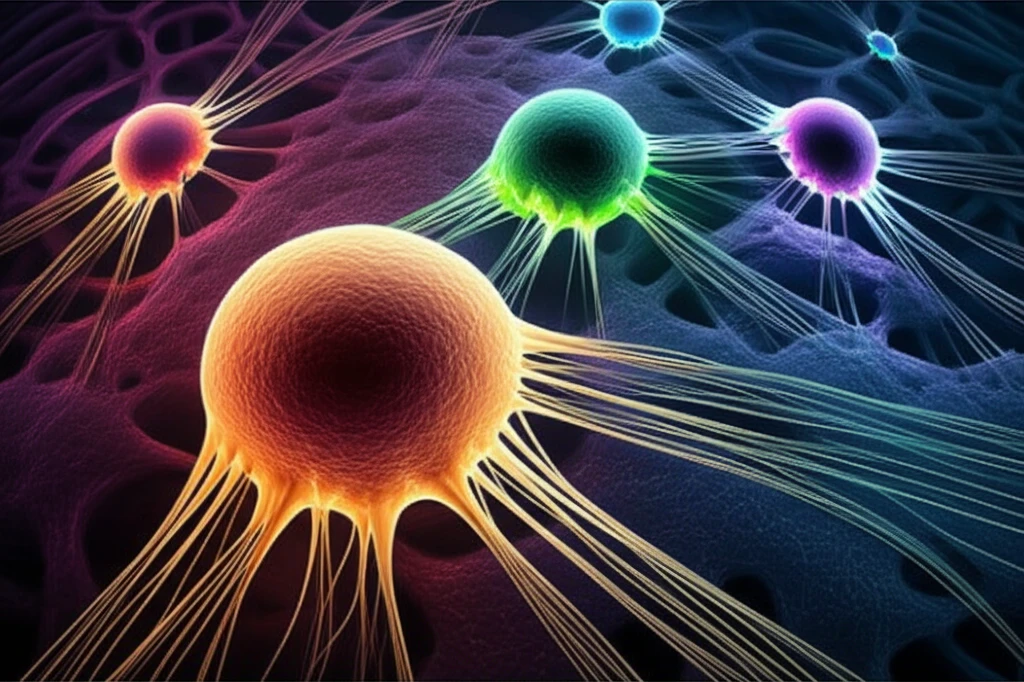
Cell Migration: How Cells Detach to Move Faster
"New research reveals the mechanics behind cell movement, showing how cells use tension to detach and accelerate migration, impacting wound healing and immunity."
Cell migration is a fundamental process crucial for various biological functions, including immunity, development, and wound healing. Cells must efficiently move to perform these roles, requiring a delicate balance between adhesion and de-adhesion. While the mechanisms driving cell protrusion at the leading edge are well-understood, how cells detach at the trailing edge to facilitate movement has remained less clear.
Previous studies suggested that cells might biochemically regulate integrin de-adhesion, especially in less motile cells. However, highly motile cells like keratocytes, capable of rapid migration, require a more efficient detachment mechanism. A plausible alternative is the mechanical dissociation of integrin-ligand bonds via cellular force.
New research has successfully mapped integrin tension in migrating cells, revealing how cells concentrate force at the rear margin to detach and accelerate movement. This article delves into these findings, explaining the critical role of mechanical forces in cell migration and its broader implications for health and disease.
Integrin Tension: The Key to Cellular De-adhesion

The study employed an integrative tension sensor (ITS) to measure integrin tension in migrating keratocytes. This sensor converts molecular tension into a fluorescent signal, enabling direct mapping of integrin tension with high resolution and sensitivity. The experiments revealed a critical insight: high-level integrin tension (HIT), ranging from 50-100 pN, is exclusively generated at the cell rear margin during cell migration.
- Integrin tension, mapped with a tension sensor, is concentrated at the cell's rear.
- High-level integrin tension (HIT) measures between 50-100 pN.
- HIT mechanically peels off focal adhesions (FAs) to facilitate cell retraction.
Implications and Future Directions
This research provides compelling evidence that migrating keratocytes mechanically mediate cell rear de-adhesion by concentrating integrin tension. This mechanical regulation is crucial for rapid cell migration, offering a more efficient detachment mechanism than purely biochemical processes.
While this study focused on keratocytes, which exhibit rapid migration rates, the findings may not directly apply to all cell types. Further research is needed to investigate whether similar mechanisms are at play in cells with lower motility. Understanding the nuances of cell-specific de-adhesion strategies could reveal new therapeutic targets for various conditions.
Future studies could explore the interplay between mechanical and biochemical signals in regulating cell de-adhesion. Investigating how cells integrate these signals to fine-tune their migratory behavior will provide a more comprehensive picture of cell migration and its role in health and disease.
